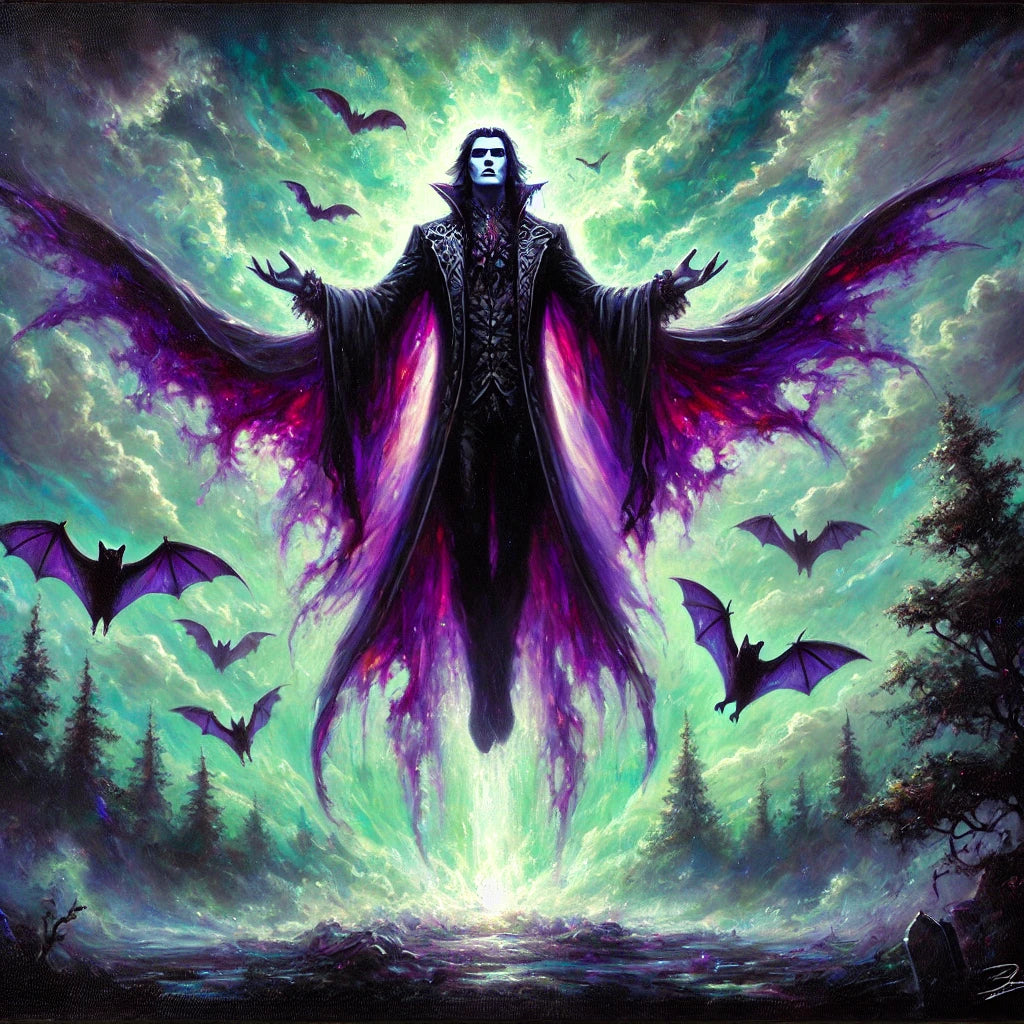Lord of Darkness
Lord of Darkness
Realizm and Ekspresjonizm
Wampiry i nietoperze and Fantastyka i science fiction
Lead time
Lead time
⏳ Delivery time
The order processing time depends on: the production technique, the drying time of the paints, the size of the image and any hand-finishing and protection.
🖼️ Art print on canvas
-
High quality canvas printing :
- Canvas - synthetic canvas 260 g
- Natural Canvas - 260 g cotton canvas
- Stretching the canvas onto the frame
- Quality control and packaging
Total completion time:
🎨 Oil Giclée Reproduction (print + hand-finished)
-
Giclée print on canvas:
- Canvas premium - natural cotton canvas 360 g
- Pigment print drying
- Hand finishing: texturing and oil painting
- Paint drying (depending on layer thickness, medium type and format)
- Stretching the canvas onto the frame
- Quality control and packaging
Total completion time: –
🚚 Ready-made paintings – shipped within 24 hours
Our gallery has a special category called "Ready-Made Paintings" - these are works available immediately, already stretched on a frame or in a ready-made frame.
- They are 100% ready for immediate shipment
- Safe packaging in a reinforced cardboard box
Shipping takes place within: from the date of booking the order.
Image format: Reprodukcja Oil Giclée
Need a different size? Contact us.
Couldn't load pickup availability
1. Title
"Lord of Darkness"
2. Description of the image
Above the forest clearing, in a silence rife with tension and mystery, the figure of a vampire lord looms – powerful, unearthly, majestic. His outstretched arms take on the shape of wings, as if he were part of the darkness that surrounds him. Bats circle the air like dark thoughts, and from his feet flows an ominous, phosphorescent mist, pierced by flashes of unnatural light.
The sky above him is stormy, heavy, as if the cosmos itself had paused to witness this phenomenon. The lord's silhouette is expressive – contrasting, almost iconic, outlined in a powerful shadow against the turbulent sky. It's not just a figure – it's a symbol: of strength, immortality, or perhaps a forgotten deity.
3. Technology
The painting was created in oil on raw canvas, using soft, broad brushstrokes in the background and glazes to create fog and light. The lord's body and silhouette are painted expressively—his presence almost transcends the canvas. The paint's structure conveys a sense of movement, floating, and the electricity of the night.
4. Style
The style oscillates between Romantic expressionism and the symbolism of darkness. This work is theatrical, but not overdone—its monumentality stems from the simplicity of the composition and the power of chiaroscuro. Every element—from the fog to the winged arms—works to foster the myth of a supernatural presence.
5. Colors
The palette is a mesmerizing blend of amethyst purple, deep emerald green, and obsidian black. The colors seem to breathe—as if each had its own temperature and rhythm. Moonlight reflects off the misty strands, adding a cool glow to the scene.
6. Invoice
The work's texture is most palpable in the mists and the lord's silhouette – glazes and broad strokes impart depth, but also a sense of unreality. This is a painting meant to be felt rather than viewed – the brushwork doesn't so much draw as leave traces of presence.
7. Inspiration
-
Arnold Böcklin – for the mysterious silhouette and symbolism.
-
John Martin – for the monumental tension of space.
-
FW Murnau ("Nosferatu") – for the terror not of screaming, but of presence.
8. Message and interpretation
This is not an image of a monster—but of a being who has transcended human form. The "Lord of Darkness" doesn't threaten—he is. He observes, exists, floats above time. It's a metaphor for power that doesn't need to be ruled, and for loneliness that doesn't seek a companion. His gesture—his arms like wings—is a hymn to the night.
9. Originality
"Lord of Darkness" is a work of visual and emotional power—a painting that doesn't tell a story, but becomes its source. It's a fragment of a world that feels as if it truly exists—on the border between dream, mythology, and shadow.
Share


